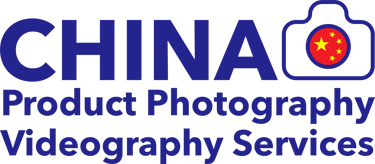How to Start an E-Commerce Business on Amazon FBA
A quick guide to starting your Amazon FBA business, from choosing products to sourcing suppliers and optimizing listings. Plus, tips on why professional product photography boosts sales.
China Product Photography
9/4/20243 min read


Starting an e-commerce business on Amazon FBA (Fulfilled by Amazon) offers entrepreneurs a powerful way to reach millions of customers with minimal logistical overhead. If you’re new to the world of Amazon FBA, it can seem overwhelming. But with the right approach, you can set up and scale your business quickly. Here’s how you can get started:
1. Choose Your Product Niche
The first step is deciding what products you want to sell. Ideally, you want to choose a niche that balances personal interest with market demand. Use tools like JungleScout, Helium 10, or Google Trends to research popular products and niches that aren’t too competitive. Look for opportunities where you can add value or differentiate your product from what’s already out there.
Consider factors like:
• Profit margins: Look for products where the difference between the production cost and potential selling price is significant.
• Size and weight: Smaller, lighter products are cheaper to ship and store, especially when using Amazon FBA.
• Sustainability: Opt for products that aren’t fads, ensuring you can sell them for a long time.
2. Set Up Your Amazon Seller Account
Once you’ve decided what you’re going to sell, it’s time to set up your Amazon Seller account. You’ll need to choose between an Individual Account (pay-as-you-go) or a Professional Account ($39.99 per month, but more features). For serious sellers, the Professional Account is the way to go, as it allows you to list an unlimited number of products and provides access to useful tools like advertising and reporting.
3. Source Your Products
Now that your Amazon Seller account is ready, it’s time to source your products. Since many e-commerce sellers source from China, platforms like Alibaba or Global Sources are great places to start. When vetting suppliers, make sure to:
• Request samples to assess product quality.
• Negotiate minimum order quantities (MOQs) to find a supplier that suits your budget.
• Check for verified suppliers with positive reviews and a history of reliable shipping.
Don’t rush this process—finding a reliable supplier can make or break your business.
4. Optimize Your Product Listings
Now that you’ve sourced your products, you need to create listings that convert visitors into buyers. This is where professional product photography comes in. High-quality images are one of the most important aspects of a good product listing.
Follow these tips for optimizing your listing:
• Use clear, high-resolution images showing the product from multiple angles.
• Write compelling product titles and descriptions that include relevant keywords for SEO.
• Highlight key features and benefits with bullet points that make the product’s advantages easy to read.
Investing in professional photography services is critical here. A well-shot product image can convey trust, make your product look more valuable, and increase conversion rates. Listings with clean, professional images have a higher chance of converting browsers into buyers.
5. Use Amazon FBA to Fulfill Orders
One of the major benefits of using Amazon FBA is that Amazon handles warehousing, shipping, and customer service. After sourcing your products, ship them directly to an Amazon warehouse. Amazon will store your products and handle the logistics, so you can focus on growing your business.
Steps to fulfill orders with FBA:
• Prepare your inventory according to Amazon’s guidelines.
• Ship your products to one of Amazon’s fulfillment centers.
• Monitor your stock levels to avoid running out of inventory and missing sales.
Once your inventory is in the FBA warehouse, Amazon takes care of packing and shipping orders to customers. They’ll even handle returns and customer service, giving you more time to focus on other aspects of your business.
6. Scale Your Business
With your business up and running, the next step is to grow. Use tools like Amazon PPC (Pay-Per-Click) to promote your products to the right audience. You can also expand your product line, optimize your pricing strategy, and improve your listings over time.
Conclusion
Starting an e-commerce business on Amazon FBA isn’t easy, but with careful planning and the right strategy, it’s possible to build a successful business. The key is choosing the right product, sourcing from reliable suppliers, and creating compelling product listings that include high-quality photography.
Invest in professional photography for your product listings, and you’ll see how much of a difference it makes. High-quality images don’t just make your products look better—they build trust and increase your chances of making sales.
